The Stop Six Sunrise Edition neighborhood association is working to bring economic growth and development to the historically African American Stop Six neighborhood in Fort Worth, Texas. The neighborhood currently faces issues like abandoned homes, closed businesses, and low incomes and property values. The association, led by Stop Six natives, aims to redevelop the area while preserving its history. They have three main goals: understand community needs, learn from other redevelopment projects, and shift residents' mindsets after past failures. Their strategies include word-of-mouth outreach, phone calls, emails, and attending city council meetings. The association draws on members' expertise in city planning and business but lacks resources like time and funding.
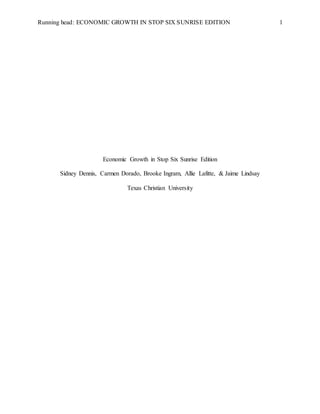





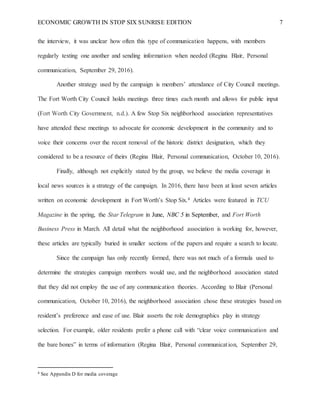


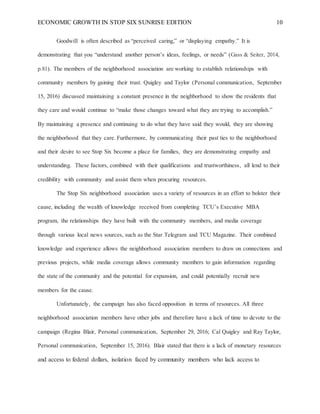



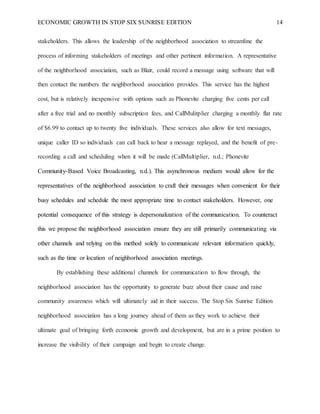


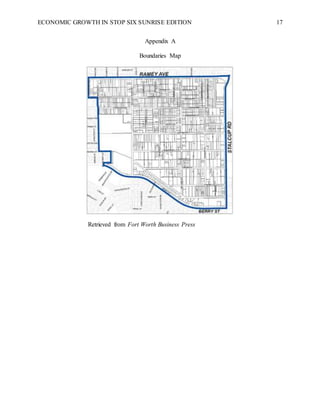
![ECONOMIC GROWTH IN STOP SIX SUNRISE EDITION 18
Appendix B
Neighborhood Photographs
Cruz, C. (n.d.). Stop Six Adopt-A-Street [Digital image].
Cruz, C. (n.d.). Antioch Baptist Church [Digital image].](https://image.slidesharecdn.com/ca656d1d-1f04-479b-baaf-d8c3a21af14d-161128153538/85/Unit-3-18-320.jpg)
![ECONOMIC GROWTH IN STOP SIX SUNRISE EDITION 19
Ratigan, E. (n.d.). Miller’s Grocery [Digital image].
Stop Six Home [Digital Image]. Retrieved from www.fortworthtexas.gov](https://image.slidesharecdn.com/ca656d1d-1f04-479b-baaf-d8c3a21af14d-161128153538/85/Unit-3-19-320.jpg)
![ECONOMIC GROWTH IN STOP SIX SUNRISE EDITION 20
Appendix C
Neighborhood Association Members
From left to right: Ray Taylor, Regina Blair, and Cal Quigley IV
Cruz, C. (n.d.). Taylor, Blair, Quigley [Digital image].](https://image.slidesharecdn.com/ca656d1d-1f04-479b-baaf-d8c3a21af14d-161128153538/85/Unit-3-20-320.jpg)


